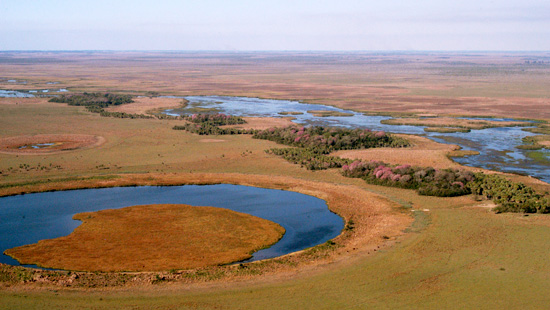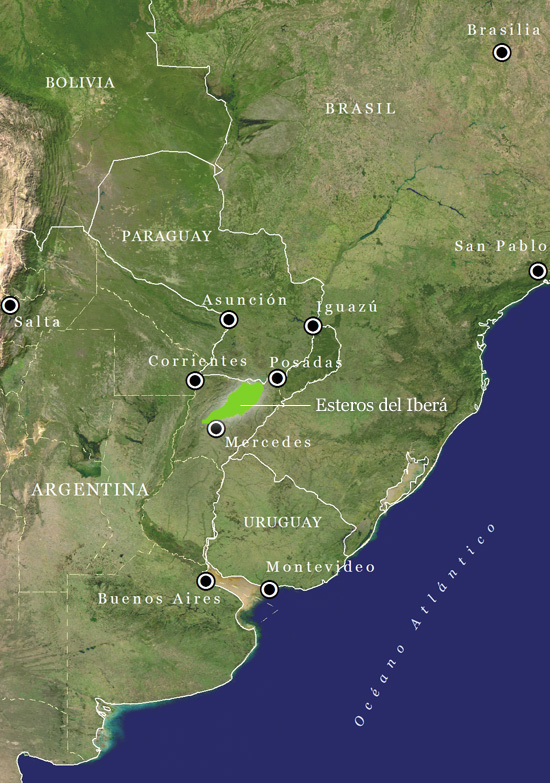What are the Esteros (wetlands) and the Iberá Reserve?
Iberá, located in the central northeast part of the Corrientes Province of Argentina, covers over 1,300,000 hectacres and is one of the most important natural regions of the Southern Cone. Simply put, it is a drainage basin that is continuously filled with rainwater making it one of the most important natural areas in the Southern Cone. Due to the area’s flat landscape, there is little outflow creating an extensive freshwater reserve. Half of Iberá is underwater. However, the region is much more than only “esteros” or “wetlands”. Iberá also encompasses high grasslands, savannahs, and forests. This integrated combination of wet and dry ecosytems harbors a great diversity of flora and fauna as well as spectacular landscapes.

Flooded lands and dry lands in the Iberá wetlands
Iberá was declared a Provincial Natural Reserve in 1983. The Reserve’s borders are set by the borders of the drainage basin, and therefore contains the entire basin within its limits. Because the administrative borders are made of water, Iberá can be protected and offers great conservation potential. Apart from beautiful landscapes and diverse flora and fauna, the Iberá region also harbors a rich culture of the local people. Their interesting history and traditions have formed around Iberá’s landscape and bring together 2 worlds: terrestrial and aquatic.
Presently, the Iberá region has great potential to develop a strong local economy based on the sustainable use of natural resources, primarily in the form of ecotourism. Thanks to the work of reserve authorities, many species of flora and fauna have been able to recuperate beautifully after the last few decades of non-ecologically sound land use. Nonetheless, Iberá still requires creative actions to secure long-term ecological integrity. These actions need to reverse the extreme environmental degradation that occurred during the 20th century. During this time of careless land use, a variety of species emblematic to Iberá disappeared, such as the glaucous macaw (globally extinct), the jaguar, the giant river otter, the collared peccary, the tapir, and the pampas deer. Our actions additionally must address the political-environmental pressures to which Iberá is subject because, unfortunately, they threaten its long-term survival and integrity.

Location of the Esteros del Iberá in the Province of Corrientes, Argentina

